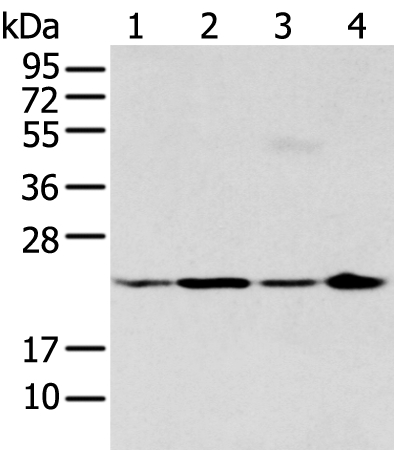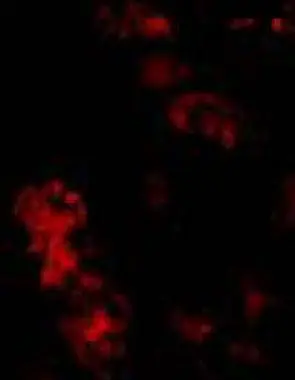anti-Bmf, mAb (9G10)
AG-20T-0130
ApplicationsFlow Cytometry, ImmunoPrecipitation, Western Blot
Product group Antibodies
ReactivityHuman, Mouse
TargetBMF
Overview
- SupplierAdipoGen Life Sciences
- Product Nameanti-Bmf, mAb (9G10)
- Delivery Days Customer10
- ApplicationsFlow Cytometry, ImmunoPrecipitation, Western Blot
- CertificationResearch Use Only
- ClonalityMonoclonal
- Clone ID9G10
- Concentration1 mg/ml
- Estimated Purity>95%
- Gene ID90427
- Target nameBMF
- Target descriptionBcl2 modifying factor
- Target synonymsbcl-2-modifying factor
- HostRat
- IsotypeIgG2a
- Protein IDQ96LC9
- Protein NameBcl-2-modifying factor
- Scientific DescriptionBmf (Bcl-2-modifying factor) belongs to the Bcl-2 protein family. Bcl-2 family members form hetero- or homo-dimers and act as anti- or pro-apoptotic regulators that are involved in a wide variety of cellular activities. Bmf contains a single Bcl-2 homology domain 3 (BH3), and has been shown to interact with other Bcl-2 proteins and functions as an apoptotic activator. Two different start sites can give rise to two proteins of 25 or 30 kDa. It is found to be sequestered to myosin V motors by its association with dynein light chain 2 (DLC2), which may be important for sensing intracellular damage and triggering apoptosis. - Monoclonal Antibody. Recognizes human and mouse Bmf. Detects several cross-reactivity bands of unknown identity in mice by western blot. Isotype: Rat IgG2akappa. Clone: 9G10. Applications: FACS, IP, WB. Liquid. In PBS containing 0.02% sodium azide. Bmf (Bcl-2-modifying factor) belongs to the Bcl-2 protein family. Bcl-2 family members form hetero- or homo-dimers and act as anti- or pro-apoptotic regulators that are involved in a wide variety of cellular activities. Bmf contains a single Bcl-2 homology domain 3 (BH3), and has been shown to interact with other Bcl-2 proteins and functions as an apoptotic activator. Two different start sites can give rise to two proteins of 25 or 30 kDa. It is found to be sequestered to myosin V motors by its association with dynein light chain 2 (DLC2), which may be important for sensing intracellular damage and triggering apoptosis.
- ReactivityHuman, Mouse
- Storage Instruction-20°C,2°C to 8°C
- UNSPSC12352203







